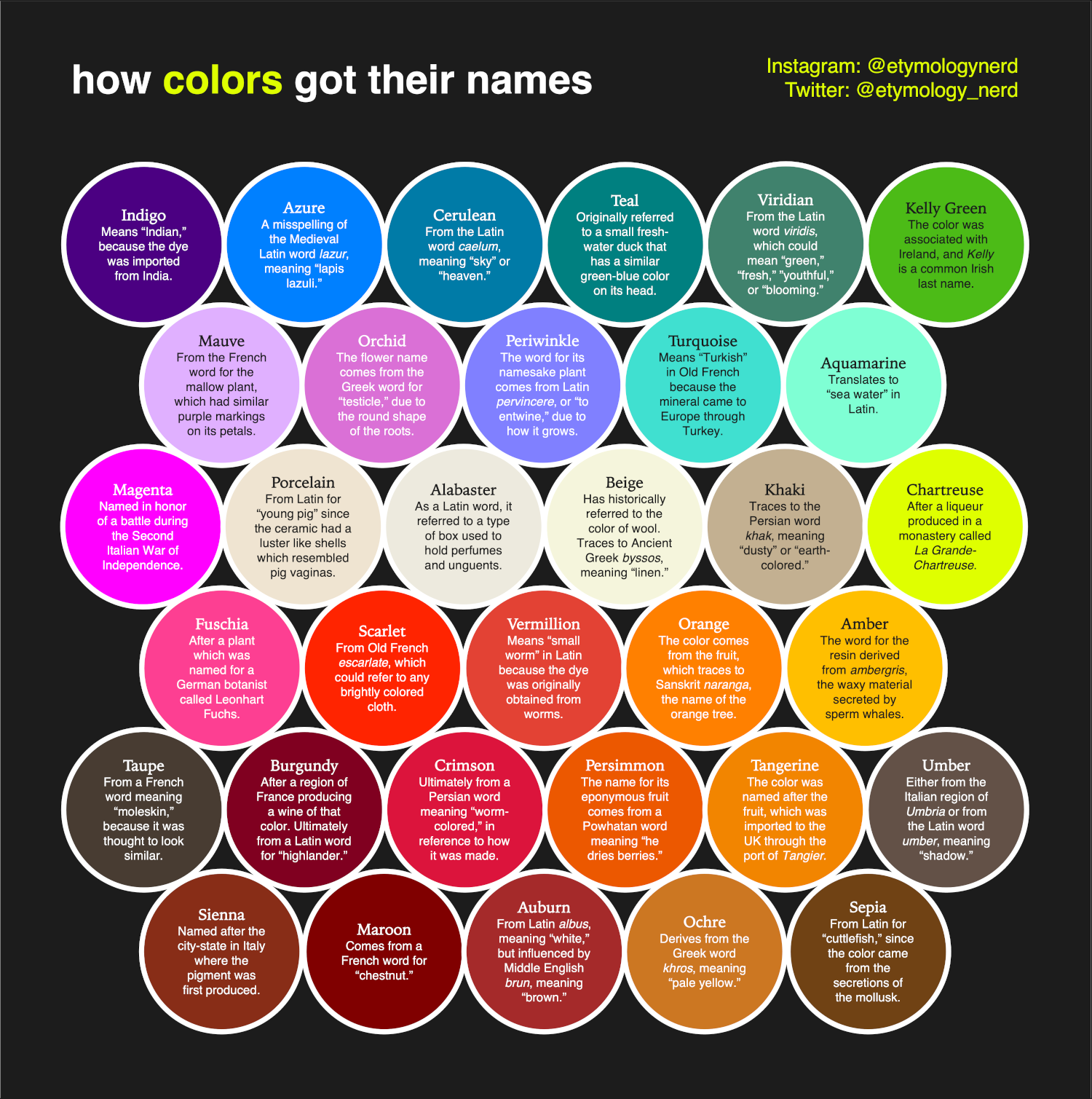Misc Visuals
How 33 Colors Got Their Names
As both a color lover and a word origins enthusiast, I was thrilled to discover this vibrant chart called “how colors got their names” while browsing r/coolguides! It was created by Adam Aleksic who goes by @etymologynerd on Instagram and etyomology_nerd on Twitter (I still refuse to call it X). He also has a website where provides an incredible interactive world map where you can learn about how any country got its name!
Click below to zoom
This splashy guide caught my eye at first because it reminds me of how professional colored markers are displayed at craft stores. The name origin for crimson sparked some intrigue because it states that it is from a Persian word meaning “worm-colored” in reference to how it was made. Vermillion, another red hue, means “small worm” in Latin. So how were these pigments made originally? Turns out it has nothing to do with worms but rather a scale insect called Kermes vermilio. Ancient Egyptians, Mesopotamians, Indians, Greeks, Romans, and Iranians crushed the dried bodies of these insects into a richly pigmented red dye.
Here is a fun little nugget of trivia from the comment section by pshokoohi: “Fun fact, in Pharsi, when we refer to someone as “khaki” it generally means they’re “down to earth.”” The word Khaki traces to the Persian word khak, meaning “dusty” or “earth-colored”. I would absolutely love to see another guide like this with entirely different colors! Here are a few I got curious about:
Yellow: “The word yellow is from the Old English geolu, geolwe (oblique case), meaning “yellow, and yellowish”, derived from the Proto-Germanic word gelwaz “yellow”. It has the same Indo-European base, gel-, as the words gold and yell; gʰel- means both bright and gleaming, and to cry out.”
Green: “From Middle English grene, from Old English grēne, from Proto-West Germanic *grōnī, from Proto-Germanic *grōniz, from Proto-Indo-European *gʰreh₁- (“to grow”).”
Pink: “The color pink is named after the flowers, pinks,[7] flowering plants in the genus Dianthus, and derives from the frilled edge of the flowers. The verb “to pink” dates from the 14th century and means “to decorate with a perforated or punched pattern” (possibly from German picken, “to peck”).”
